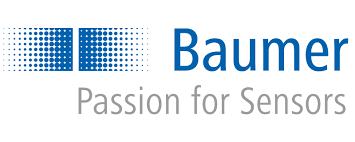
Where a sensing application involves the challenges of shiny, irregular, reflective or ultra-black objects, (such as car body parts or wafers with anti-reflective coatings), the issues of poor accuracy and reliability become more significant. These challenges often occur in the automotive and semi-conductor industries where the ‘time is money’ mantra is high on the ‘wish-list’ of system engineers and specifiers.
Thanks to their expertise in designing a proven portfolio of sensors and systems which are established across many industry sectors, means sensing and instrumentation specialists BAUMER have the ability to continually develop innovative, problem solving sensors. A good example of this is their new OT300 & OT500 optical sensors which offer a wide detection range thanks to a line or spot beam time-of-flight measurement which independent of the angle of installation, will reliably detect objects, even with a ‘demanding or irregular’ surface.
They are designed to reliably detect objects within a large sensing distance ranging up to 2.6m for the OT500 sensor and up to 1.8m for the more compact OT300, which is ideal for systems where space is very limited. The benefits of a compact design is supported by 3D CAD data with integrated beam path which is aligned to the mounting holes with a component tolerance compensation (qTarget), plus convenient teaching via qTeach and the standardised IO-Link interface with Smart Sensor Profile (DMSS).
The combination of all these features allows users to achieve intuitive parameterisation by using the Baumer Sensor Suite software to improve process transparency thanks to easy access to secondary sensor data.
More at: Standard with extra power | Baumer international
Tel: +44 1793 783839 email: sales.uk@baumer.comwww.baumer.com/gb/en/











Shaping the future of composites in the UK automotive sector
I would have thought that thermoplastic based composites would enhance formability - whether they be lamellar or fibre composites and, too, be more...